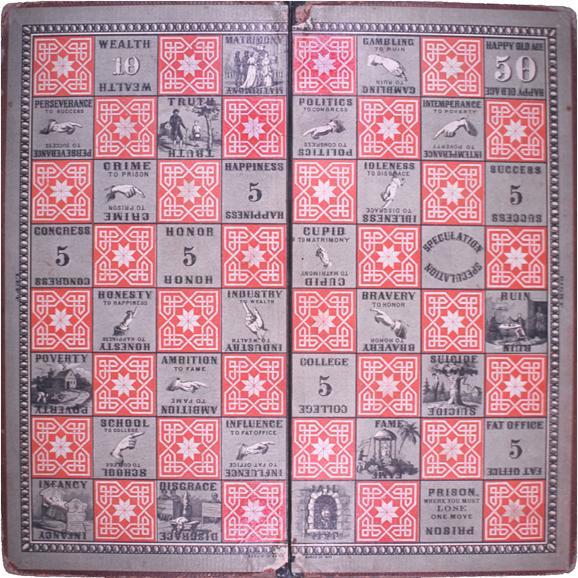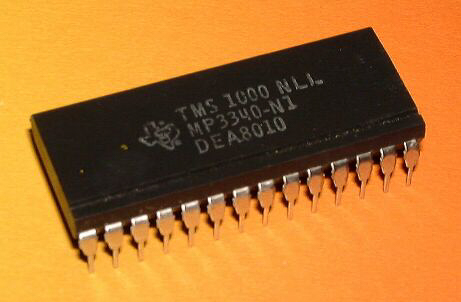|
Entex Select-A-Game
The Entex Select-a-game is a handheld game system released in 1981 by Entex Industries. Entex released six games for the device before they dropped support in 1982 in favor of the Entex Adventure Vision. Hardware The Select-a-Game uses a 7 x 16 vacuum fluorescent display (VFD) array of large dots as the main display. It can display two colors, red and blue. These are combined with static overlays for each game. Together they make up the display. The system is basically a display and controller for the games with no built-in processor power. Each game cartridge contains a microprocessor programmed with the appropriate game code in it. In this respect, it is very similar to the concept of Milton Bradley's Microvision system released a few years earlier. The system can be powered by four C batteries, or by an external A/C power supply. The power supply was only available by mail-order. Games The games released for the system are: *''Space Invader 2'' *''Basketball 3'' *''Foot ... [...More Info...] [...Related Items...] OR: [Wikipedia] [Google] [Baidu] |
Entex Industries
Entex Industries, Inc. was an American toy and electronic game manufacturer based in Compton, California. The company was active during the 1970s and 1980s. Background The company was formed in 1970 by ''G.A. (Tony) Clowes'', ''Nicholas Carlozzi'' and ''Nick Underhill''. It was based at 303 West Artesia Blvd, Compton. Its name was derived from taking Nicholas' and Tony's initials and adding an 'X' on the end to form ''NTX'', which when spoken sounds like ''Entex''. Nick Underhill's initial was not included as he had joined the company after the name had already been chosen, but before it opened for business. The company logo consisted of an RAF bullseye with a smiling face in the middle. In 1980, the company achieved sales in excess of $100 million. The company folded in the early eighties, due in part to increasing competition from video game consoles and computer games which quickly became a preferred form of entertainment, much to the cost of the electronic games industry. P ... [...More Info...] [...Related Items...] OR: [Wikipedia] [Google] [Baidu] |
Battery (electricity)
An electric battery is a source of electric power consisting of one or more electrochemical cells with external connections for powering electrical devices. When a battery is supplying power, its positive terminal is the cathode and its negative terminal is the anode. The terminal marked negative is the source of electrons that will flow through an external electric circuit to the positive terminal. When a battery is connected to an external electric load, a redox reaction converts high-energy reactants to lower-energy products, and the free-energy difference is delivered to the external circuit as electrical energy. Historically the term "battery" specifically referred to a device composed of multiple cells; however, the usage has evolved to include devices composed of a single cell. Primary (single-use or "disposable") batteries are used once and discarded, as the electrode materials are irreversibly changed during discharge; a common example is the alkaline battery us ... [...More Info...] [...Related Items...] OR: [Wikipedia] [Google] [Baidu] |
Handheld Game Consoles
A handheld game console, or simply handheld console, is a small, portable self-contained video game console with a built-in screen, game controls and speakers. Handheld game consoles are smaller than home video game consoles and contain the console, screen, speakers, and controls in one unit, allowing people to carry them and play them at any time or place.Li, Frederick W. B. Computer Games'. . Durham University. Retrieved December 19, 2008. p. 4. In 1976, Mattel introduced the first handheld electronic game with the release of ''Auto Race''. Later, several companies—including Coleco and Milton Bradley—made their own single-game, lightweight table-top or handheld electronic game devices. The first commercial successful handheld console was Merlin from 1978 which sold more than 5 million units. The first handheld game console with interchangeable cartridges is the Milton Bradley Microvision in 1979. Nintendo is credited with popularizing the handheld console concept w ... [...More Info...] [...Related Items...] OR: [Wikipedia] [Google] [Baidu] |
Coleco
Coleco Industries, Inc. was an American company founded in 1932 by Maurice Greenberg as The Connecticut Leather Company. It was a successful toy company in the 1980s, mass-producing versions of Cabbage Patch Kids dolls and its video game consoles, the Coleco Telstar dedicated consoles and ColecoVision. While the company ceased operations in 1988 as a result of bankruptcy, the Coleco brand was revived in 2005, and remains active to this day. Overview Coleco Industries, Inc. began in 1932 as The Connecticut Leather Company. The business supplied leather and "shoe findings" (the supplies and paraphernalia of a shoe repair shop) to shoe repairers. In 1938, the company began selling rubber footwear. During World War II demand for the company's supplies increased and by the end of the war, the company was larger and had expanded into new and used shoe machinery, hat cleaning equipment and marble shoeshine stands. By the early 1950s, and thanks to Maurice Greenberg's son, Leonard G ... [...More Info...] [...Related Items...] OR: [Wikipedia] [Google] [Baidu] |
Turtles (video Game)
''Turtles'' is a video game developed by Konami and published in arcades in 1981 by Stern and Sega. The Sega version was published as ''Turpin'' (ターピン). ''Turtles'' is a maze game where the player is a turtle trying to bring baby turtles (called "kidturtles") to their homes while avoiding beetles. The game was ported to an unusual set of home systems. 1982 releases were for the Magnavox Odyssey², Arcadia 2001, and one of the four cartridges for Entex Adventure Vision. A handheld version of ''Turtles'' was also released by Entex in 1982. A port for the Casio PV-1000 followed in 1983. Gameplay Scattered throughout the maze are boxes with question marks on them. When the player walks over a question mark, a baby turtle crawls onto the main turtle's back, a house will appear at a random location on the map, and the player will have to bring the baby turtle to its house while avoiding beetles. Other times, however, beetles will come out of the boxes, which the player will ... [...More Info...] [...Related Items...] OR: [Wikipedia] [Google] [Baidu] |
Battleship (game)
Battleship (also known as Battleships or Sea Battle) is a strategy type guessing game for two players. It is played on ruled grids (paper or board) on which each player's fleet of warships are marked. The locations of the fleets are concealed from the other player. Players alternate turns calling "shots" at the other player's ships, and the objective of the game is to destroy the opposing player's fleet. ''Battleship'' is known worldwide as a pencil and paper game which dates from World War I. It was published by various companies as a pad-and-pencil game in the 1930s and was released as a plastic board game by Milton Bradley in 1967. The game has spawned electronic versions, video games, smart device apps and a film. History The game of ''Battleship'' is thought to have its origins in the French game '' L'Attaque'' played during World War I, although parallels have also been drawn to E. I. Horsman's 1890 game Basilinda, and the game is said to have been played by Russian o ... [...More Info...] [...Related Items...] OR: [Wikipedia] [Google] [Baidu] |
Pac-Man
originally called ''Puck Man'' in Japan, is a 1980 maze video game, maze action game, action video game developed and released by Namco for Arcade game, arcades. In North America, the game was released by Midway Manufacturing as part of its licensing agreement with Namco America. The player controls Pac-Man (character), Pac-Man, who must eat all the dots inside an enclosed maze while avoiding four colored Ghosts (Pac-Man), ghosts. Eating large flashing dots called "Power Pellets" causes the ghosts to temporarily turn blue, allowing Pac-Man to eat them for bonus points. Game development began in early 1979, directed by Toru Iwatani with a nine-man team. Iwatani wanted to create a game that could appeal to women as well as men, because most video games of the time had themes of war or sports. Although the inspiration for the Pac-Man character was the image of a pizza with a slice removed, Iwatani has said he also rounded out the Japanese character for mouth, kuchi ( ja, wiktiona ... [...More Info...] [...Related Items...] OR: [Wikipedia] [Google] [Baidu] |
Space Invaders
is a 1978 shoot 'em up arcade game developed by Tomohiro Nishikado. It was manufactured and sold by Taito in Japan, and licensed to the Midway division of Bally for overseas distribution. ''Space Invaders'' was the first fixed shooter and set the template for the shoot 'em up genre. The goal is to defeat wave after wave of descending aliens with a horizontally moving laser to earn as many points as possible. Designer Nishikado drew inspiration from North American target shooting games like '' Breakout'' (1976) and '' Gun Fight'' (1975), as well as science fiction narratives such as the novel '' The War of the Worlds'' (1897), the anime '' Space Battleship Yamato'' (1974), and the movie '' Star Wars'' (1977). To complete development of the game, he had to design custom hardware and development tools. Upon release, ''Space Invaders'' was an immediate commercial success; by 1982, it had grossed $3.8 billion (equivalent to over adjusted for inflation ), with a net p ... [...More Info...] [...Related Items...] OR: [Wikipedia] [Google] [Baidu] |
Microvision
The Microvision (aka Milton Bradley Microvision or MB Microvision) is the first handheld game console that used interchangeable cartridges and in that sense is reprogrammable. It was released by the Milton Bradley Company in November 1979 for a retail price of $49.99. The Microvision was designed by Jay Smith, the engineer who would later design the Vectrex gaming console. The Microvision's combination of portability and a cartridge-based system led to moderate success, with Smith Engineering grossing $15 million in the first year of the system's release. However, very few cartridges, a small screen, and a lack of support from established home video game companies led to its demise in 1981. According to Satoru Okada, the former head of Nintendo's R&D1 Department, the Microvision gave birth to Game Boy, the follow up to Game & Watch, after Nintendo designed around Microvision's limitations. Production Unlike most later consoles, the Microvision did not contain an onboard proce ... [...More Info...] [...Related Items...] OR: [Wikipedia] [Google] [Baidu] |
Video Game Console
A video game console is an electronic device that outputs a video signal or image to display a video game that can be played with a game controller. These may be home consoles, which are generally placed in a permanent location connected to a television or other display devices and controlled with a separate game controller, or handheld consoles, which include their own display unit and controller functions built into the unit and which can be played anywhere. Hybrid consoles combine elements of both home and handheld consoles. Video game consoles are a specialized form of a home computer geared towards video game playing, designed with affordability and accessibility to the general public in mind, but lacking in raw computing power and customization. Simplicity is achieved in part through the use of game cartridges or other simplified methods of distribution, easing the effort of launching a game. However, this leads to ubiquitous proprietary formats that creates competi ... [...More Info...] [...Related Items...] OR: [Wikipedia] [Google] [Baidu] |
Milton Bradley
Milton Bradley (November 8, 1836 – May 30, 1911) was an American business magnate, game pioneer and publisher, credited by many with launching the board game industry, with his eponymous enterprise, which was purchased by Hasbro in 1984, and folded in 1998. Biography Born in Vienna, Maine, in 1836, to Lewis and Fannie (Lyford) Bradley, Bradley grew up in a working class household. The family moved to Lowell, Massachusetts, in 1847. After completing high school in 1854, he found work as a draftsman and patent agent before enrolling at the Lawrence Scientific School in Cambridge, Massachusetts. He was unable to finish his studies after moving with his family to Hartford, Connecticut, where he could not find gainful employment. In 1856, Bradley moved to Springfield, Massachusetts, where he worked as a mechanical draftsman. In 1859, Bradley went to Providence, Rhode Island, to learn lithography; and, in 1860, he set up the first color lithography shop in Springfield, Massac ... [...More Info...] [...Related Items...] OR: [Wikipedia] [Google] [Baidu] |
Microprocessor
A microprocessor is a computer processor where the data processing logic and control is included on a single integrated circuit, or a small number of integrated circuits. The microprocessor contains the arithmetic, logic, and control circuitry required to perform the functions of a computer's central processing unit. The integrated circuit is capable of interpreting and executing program instructions and performing arithmetic operations. The microprocessor is a multipurpose, Clock signal, clock-driven, Processor register, register-based, digital integrated circuit that accepts binary code, binary data as input, processes it according to instruction (computing), instructions stored in its computer memory, memory, and provides results (also in binary form) as output. Microprocessors contain both combinational logic and sequential logic, sequential digital logic, and operate on numbers and symbols represented in the binary number system. The integration of a whole CPU onto a s ... [...More Info...] [...Related Items...] OR: [Wikipedia] [Google] [Baidu] |






